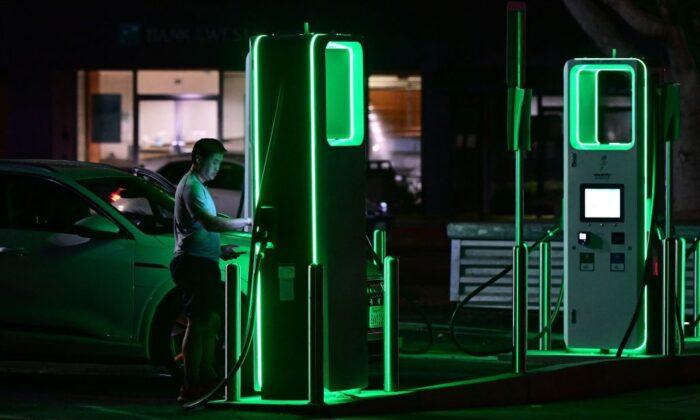
Defining a Solid-State Battery
Solid-state batteries refer to batteries made entirely from solid materials, unlike lithium-ion batteries which contain a liquid electrolyte that ions flow within during the charge or discharge process.In SSBs, lithium ions are inserted or extracted into or from solid electrodes. However, the insertion and extraction process of SSBs has proven to be an issue, resulting in changes to the crystal structure of the electrode material, which brings about alterations in volume. The repeated shrinkage and expansion of the electrode cause irreversible changes to its crystal chemistry and damage to the interface between the electrodes and the solid electrolyte.
Co-author of the paper that published the team’s findings, UNSW Associate Prof. Neeraj Sharma, said in an email to The Epoch Times that SSBs can be classified by two aspects. He said one of these aspects is the electrolyte and whether they use lithium metal or another electrode.
“The batteries could also use graphite or another alternative to lithium metal, but lithium metal is the ultimate goal as it provides the highest energy density,” he said.
Sharma also noted that ceramic or inorganic solid electrolytes are currently being developed, but the lithium metal option is still the ultimate goal. Although, he explained that research is looking at various options ranging from alloys to other oxides that can be coupled with a lithium transition metal oxide or phosphate.
“The field is huge, so research is occurring at a very fast pace,” he said.

How the Material Works
The research team investigated a material that showed unprecedented stability in SSBs called Li8/7Ti2/7V4/7O2. The material is a binary system composed of optimised portions of lithium titanate (Li2TiO3) and lithium vanadium dioxide (LiVO2).Li8/7Ti2/7V4/7O2 has a large number of lithium ions that can be reversibly inserted and extracted during the charge or discharge process. Consequently, when ball-milled to the appropriate particle size, in the order of nanometers, the material offers a higher battery capacity—storage of electrical charge.
However, the unique and essential feature of the material is its almost consistent volume across the charging cycle. The scientists analysed the origin of this ability and concluded that it’s the result of a delicate balance between two phenomena that occur when lithium ions are inserted and extracted from the crystal.
The first of the two phenomena is the shrinking effect that occurs when lithium ions are removed from the material, which causes an increase in the free volume within the crystal. The other is the migration of vanadium ions into those recently vacated spaces, which increases the oxidation state of the ions, creating a repulsive interaction with oxygen that expands the crystal lattice.
Yabuuchi said that further optimisation of the electrolyte’s chemical composition is expected to produce a truly dimensionally invariable material, which upon electrochemical cycling, retains its volume.

Material Could Reduce Battery Costs
The researchers tested the material as a positive electrode in an all-solid-state cell, which exhibited a remarkable capacity of 300 mA.h/g with no degradation over 400 charge/discharge cycles. Sharma said that this absence of degradation indicates the superior performance of the material in comparison with those reported for conventional all-solid-state cells with layered materials.“This finding could drastically reduce battery costs. The development of practical high-performance solid-state batteries can also lead to the development of advanced electric vehicles,” Sharma said.
“The development of long-life and high-performance solid-state batteries would solve some of the problems of electric vehicles,” Prof. Yabuuchi said.
“In the future, for instance, it may be possible to fully charge an electric vehicle in as little as five minutes.”

Fast Charging and Safety of Solid-State Batteries
Meanwhile, Sharma said that the reason why SSBs charge more quickly than Lithium-ion batteries depends on the battery chemistry and the variables.He said that one take on the faster charging capabilities of solid-state batteries is that the batteries are safer with the solid electrolyte. SSBs are unlikely to form lithium dendrites, which can be bad for conventional liquid electrolyte lithium-ion batteries.
“So one can safely fast charge a solid-state battery,” Sharma said.




